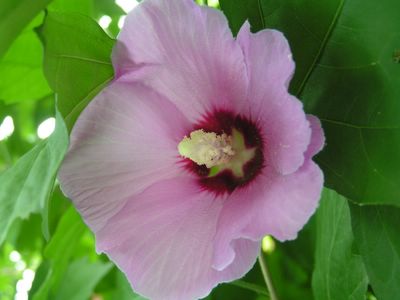More Types Of Shrub To Use In Your Garden
Buddleia, the butterfly bush, is 16 feet or more if not killed back by winter, and gets its name from the fact that in the summer, butterflies are always seen around it. The buddleia takes many forms: as a small - leaved shrub with small purple flowers; as fascinating, a cattleya-pink bush; as flaming violet, a brilliant purple, and as white profusion, a dwarf variety with pure white flowers. Also the Empire blue shrub, the dubonnet, the red glory and white cloud.
Flowering quince (Cydonia) has roselike flowers and a scarlet bloom in spring. Japanese quince grows to 6 feet; has orange-scarlet flowers.
Deutzia is an easily grown shrub, pleasing for the many small flowers in spring. Types include the 2- to 3-foot pink deutzia, with its delicate flowers; the pride of Rochester, with large double white flowers, and Deutzia Lemoinei, which has large, pure white flowers.
Other shrubs are the dwarf buckeye, which blossoms in July with 12-inch spikes; the chokeberry bush, liked for its decorative fruit; broom, which grows in sandy places and blooms in June and July, and witch hazel, a shrub that grows to 20 feet and has spidery yellow flowers.
Forsythia is a welcome shrub because it needs little care; with its drooping sprays of yellow flowers, it is useful for softening the lines of walls.
Hibiscus blooms in August, a rarity, with flowers that are large and purple, or rose-pink or white. It grows to 12 feet if unpruned.

Beautiful hibiscus. Martinsburg, WV, USA captured July, 17th. 2005
Hydrangea, another shrub with large blossoms blooming in July and August, is a showy bush, with big blue globe-shaped clusters.
Honeysuckle bushes are useful for mass planting. Some varieties are especially enjoyable because they blossom in February and March. Several spirea varieties are found to be useful as screen plantings, particularly because of their dense growth and abundant flowering. Anthony Waterer spirea is a 2-foot bush with white or rose-pink clusters.
Bridal wreath has profuse white clusters in May. Spirea Thunbergii also has white flowers, and Spirea Vanhouttei, 8 feet high with dense white flowers, is used as a living fence.
Viburnum (the popular snowball) is 10 to 12 feet high at maturity and is used for high foundation, screening and hedges. It has white snowball-shaped flowers and foliage turns crimson in fall.
Weigela is popular, too, in many varieties, including the variegated weigela, a dwarf shrub with rose flowers and variegated silvery leaf. There is also Weigela rosea, with rosy trumpet-shaped flowers, and the new brilliant cardinal shrub.
About The Author...
Paul Curran is CEO of Cuzcom Internet Publishing Group and webmaster at Trees-and-Bushes.com, providing a range of quality plants, trees, bushes, shrubs, seeds and outdoor garden products. Website: www.trees-and-bushes.com
Technorati Profile
 Using rose cuttings to propagate new plants is still one of the simplest and most fun garden projects that any gardener can undertake with relative ease. And what better way to start off a beautiful rose garden on the cheap? There is no right way for preparing rose cuttings. In fact, everyone seems to have their own special recipe propagating roses. Here a few suggestions to get you started in the ancient art of preparing and planting rose cuttings. You may want to experiment with different methods to find what works best in your garden.
Using rose cuttings to propagate new plants is still one of the simplest and most fun garden projects that any gardener can undertake with relative ease. And what better way to start off a beautiful rose garden on the cheap? There is no right way for preparing rose cuttings. In fact, everyone seems to have their own special recipe propagating roses. Here a few suggestions to get you started in the ancient art of preparing and planting rose cuttings. You may want to experiment with different methods to find what works best in your garden.